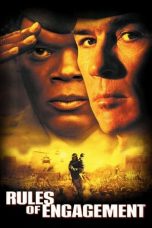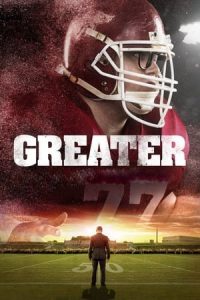- Source: Australian rules football in the Northern Territory
In the Northern Territory (NT), Australian rules football is a popular participation and spectator sport, particularly among the many remote Indigenous Australian communities of the outback such as the Tiwi Islands but also in the capital Darwin and other cities particularly Alice Springs. There are more than 15 regional competitions across the territory, the highest profile being the semi-professional Northern Territory Football League based around Darwin and Central Australian Football League around Alice Springs. It is governed by AFL Northern Territory. 7,158 adults and 3,917 children play it, of which about a third are female. Participation per capita has fallen from 18% in 2017 when it had the highest rate for a team sport in Australia to 3.4% in 2024 and fourth behind soccer, basketball and cricket.
The territory's men's team made a single interstate representational appearance at the 1988 Adelaide Bicentennial Carnival. Selected under State of Origin criteria and featuring such names as Maurice Rioli, Michael Long and Michael McLean it went through undefeated to take out the Division 2 premiership with big wins against Tasmania, the VFA and the national amateurs team. In 1993 it was merged with Queensland to create a composite side which has not appeared since. Northern Territory had a standalone representative side in the underage National Championships between 1979 and 2016, this side won three Division 2 titles—Under 16 in 1999, and Under 19 in 2004 and 2012. Since 2021, the Northern Territory Academy has participated in the Talent League. The NT is home to the Indigenous All-Stars and Flying Boomerangs representative teams. The All-Stars hold the current attendance record for any football code in the Territory - 17,500 set in 2002. A professional club, the Northern Territory Football Club (NT Thunder) was formed in 2008 and competed in the second tier semi-national NEAFL competition.
Since the first Australian Football League (AFL) match played in Darwin during the 2004 AFL season, attendances have averaged 9,320. They have steadily declined from a peak of 14,100 in 2006 (featuring the Western Bulldogs). Under the 2020 arrangement with the Gold Coast Suns and Melbourne FC, the NT receives two matches in Darwin (Marrara Oval) and one in Alice Springs (Traeger Park) each year. In addition, Darwin hosted the 2020 Dreamtime match including the first AFL Women's (AFLW) fixture during the 2024 season. The AFL's Gold Coast Suns have access to the best junior talent from the Territory through its recruitment zone and the Gold Coast Suns Academy. In 2021, following a 2018 scoping study, AFL Northern Territory launched an official bid to enter a team into the national AFL competition. This bid is under consideration by the league for entry around 2030.
Since the debut of Reuben Cooper in 1969, over 100 of born-and-raised Territorians have played in the AFL and AFLW. However, a significant percentage have launched their professional football careers from other states, particularly South Australia, Western Australia and Queensland. Nevertheless the sport in 2017 produced more professional players per capita AFL than any other state or territory. Two dynasties from the NT have together produced numerous prominent footballers: the Rioli and Long families. Australian Football Hall of Famer Maurice Rioli was known also for his career in the WAFL prior to playing in Victoria. Hall of Famer Andrew McLeod is often considered the most accomplished AFL player born and raised in the NT, and Hall of Famer Nathan Buckley is the only Territorian to win the Brownlow Medal. Darwin-born Shaun Burgoyne holds both the Territorian AFL games and goals records, with 407 games and 302 goals. Shaun Burgoyne and Cyril Rioli have played in 4 AFL premierships, more than any other Territorian. In the AFLW, Danielle Ponter of the Rioli-Long family is the most prominent NT player, having kicked the most goals and played the most games.
History
Prior to separation from South Australia, during the 1870s and 1880s the local media reported almost equally on both Australian rules and rugby, there was a growing awareness of international rugby and also of both American football and soccer. Australian rules began to gain favour in the Northern Territory late 1880s due mainly to South Australia's involvement in intercolonials with Victoria. Apart from the difficulties presented by distance and population, attempts to form a local football club were hampered by the lack of an oval, with the only available oval in being by destroyed white ants. Following separation from South Australia in 1911, association football was the first form of football played in the NT, with a match against British sailors from the HMS Prometheus taking place in 1912. However, there were insufficient local footballers to field a full team.
Reuben Cooper Snr, an Iwaidja person, is credited with introducing Australian rules football in Darwin in 1915 after learning the game while boarding at St Peter's College, Adelaide. The first rugby match was played on 3 February 1916, and an Australian rules match was also planned for that day but proved difficult to organise due to insufficient numbers. The first recorded match of Australian rules football in Darwin was played on Saturday, 12 February 1916, on Darwin Town Oval between Red and Blue (32) and Red and White (20). It was followed by a second match the following Saturday organised as a Red Cross fundraiser. The NT Football Association was formed shortly thereafter with its first regular competition matches beginning in March 1916.
The Northern Territory Football League chose to play in the Northern Territory's 'wet season', primarily due to hard playing surfaces during the 'dry season'. Games were played on the Esplanade or Town Oval. Most other leagues in Australia operate during the winter, but since the NT does not have a winter, it is played at different times. The Wanderers Football Club were the founding members of the league in 1916.
Australian rules was introduced to Port Keats (now Wadeye) by Father Richard Docherty with the commencement of the local mission Werntek Nganayi in 1935.
By 1940, football matches in Darwin were not only highly popular with the Indigenous community but also highly multicultural, with a high percentage of the crowd being Chinese.
John Pye and Andy Howley introduced Australian rules football to the Tiwi Islands in 1941, which grew to become the most popular sport there. Within a couple of decades, the major Australian leagues began to take an interest with the first player offered a contract being Joe Saturninas in 1955 followed by the more successful David Kantilla in the SANFL and later by Maurice Rioli in the VFL. Today, around a third of the Territorians in the national AFL are from the islands. The Tiwi Islands Football League is a strong competition which feeds players into the NTFL. Skills of the TIFL players are widely celebrated. The TIFL Grand Final is the largest event on the island and a major tourist drawcard.
The Central Australian Football Association began in 1947 and quickly became Alice Springs most popular sport.
In 1954, the NTFL moved from the ageing Darwin Town Oval to the newly opened Gardens Oval.
It was established on the Goulburn Island at Warruwi in 1959.
In 1974, the Gove Australian Football League began, establishing the sport in Arnhem Land and the Gove Peninsula. In 1988, competition began in the Katherine region with the establishment of the Katherine District Football League. At the inland townships of Tennant Creek and to a lesser extent Katherine, rugby league is popular due to it being established earlier (at Tennant Creek in the 1930s and Katherine in the 1960s) and the strong Queensland influence being close to the inland route between Queensland, Darwin and Alice Springs. Nevertheless, the Barkly Australian Football League was formed in 1991 to cater for increased popularity of Australian rules in the remote communities of the region.
In 1991, Marrara Oval was increased in capacity, and became the new home for the NTFL and AFL matches. The first AFL pre-season fixture between Collingwood and West Coast was played in February 1992 in front of a crowd of 11,000 spectators.
In 1991, Darwin hosted the first Arafura Games, the first international competition to include Australian rules football, and local teams have competed against nations from around the world. The city has hosted the competition ever since.
Since the late 1990s, the Indigenous All-Stars have gained large support from Indigenous Australians in the Northern Territory.
= Recent history
=In 2000, the Tanami Football League was formed in the Yuendumu region.
In 2002, a record crowd of 17,500 attended an AFL pre-season practice between the Indigenous All-Stars and Carlton Football Club.
However, in a deal struck with the Northern Territory government, Melbourne based Western Bulldogs AFL side has played several home games a year at Marrara Oval.
The first NT women's league was founded in 2004 as a division of the NTFL in Darwin.
In 2004, Alice Springs main ground Traeger Park was re-developed and has hosted several AFL exhibition matches.
In 2007, a representative side began in earnest a campaign to join a major league, the SANFL, WAFL or QAFL with the new team split between Alice Springs and Darwin. A decision was reached in late 2008, with the Northern Territory Football Club, known as the Thunder, formed to field a team in the Queensland competition from the 2009 season onwards. The Thunder now play in the NEAFL, an elite competition for clubs from Queensland, New South Wales and Canberra as well as the reserve teams of four AFL clubs (Sydney, GWS Giants, Brisbane and Gold Coast).
In 2009, a league was established on Groote Eylandt which quickly became popular. In 2012, the Wilurrara Tjataku Football League was established due to the substantial obstacles faced by remote communities to travel to Alice Springs.
In 2017, the AFL's Melbourne Football Club and Melbourne Cricket Club began a fundraiser to turf the desert football ground surface at Northern Territory home of the Ltyentye Apurte Community 80 km south east of Alice Springs. Completed in 2021, the softer ground helped establish a new league, the CAFL Country League Premiership.
NT women will play a prominent role in the Crows team, with the teams playing under a combined Northern Territory/South Australia banner. There are eight clubs in the competition. As of the start of 2017, these NT teams have contributed the following players:
Wanderers: Sophie Armitstead, midfield/defender; Stevie-Lee Thompson, midfielder.
Waratahs: Ange Foley, midfielder; Abbey Holmes, forward; Heather Anderson, defender; Lauren O'Shea defender/ruck.
St Marys: Tayla Thorn, utility.
Tracy Village: Sally Riley, utility.
Darwin Buffaloes: Jasmine Anderson, midfielder.
Competitions
= Club Competitions
== Men's
== Women's
== Juniors
=Team of the Century
On 3 September 2016, the AFLNT named their team of the 20th century.
Coach of the Century: John Taylor.
Representative teams
The Northern Territory was represented in early Interstate matches in Australian rules football, before being incorporated into the QLD/NT and then Australian Alliance representative sides. They won the Australian National Football Carnival (Div 2) Championship in 1988.
At Under 16 and Under 18 level, the NT fields teams in the national championships.
The Indigenous All-Stars, a team composed of indigenous Australian players mostly from the AFL and all over the country, are based in Darwin. Darwin is also home of the Flying Boomerangs, the junior indigenous side, which has toured the world to play matches against other countries.
Audience
= Attendance record
=17,500 (Aboriginal All-Stars vs Carlton; 2002; AFL pre-season practice; Marrara Oval, Darwin)
Major Australian rules events in the Northern Territory
Northern Territory Football League Grand Final
Tiwi Islands Football League Grand Final
Arafura Games (quadrennial)
Australian Football League Premiership Season (Melbourne 'home' games)
Players
= Participation
=According to Ausplay, participation in the NT has declined rapidly in recent years, from over 10,000 participants and 7% per capita participation to just over 7,000 and 3.6% in just a few years.
In 2017, AFLNT reported 44,729 direct participants in Australian rules football through official competitions or programs, which makes up 18% of the NT population. There are also around 15,000 more participants in AFL promotional activities.
Around half of all participants are in non-metropolitan areas of the Northern Territory, and a growing 34% of participants are women.
The Tiwi Islands is said to have the highest participation rate in Australia (35%) [1].
= Greats
=The Northern Territory has produced a disproportionate amount of talent for elite leagues such as the Australian Football League, South Australian National Football League and West Australian Football League, including many Indigenous Australian players.
Territorian Hall of Famers include: Maurice Rioli, Michael Long, Andrew McLeod and Nathan Buckley.
Notable Territorian players in the AFL include: Shaun Burgoyne, Michael McLean, Daryl White, Aaron Davey, Cyril Rioli, Joel Bowden, Brad Ottens, Mathew Stokes, Ronnie Burns, Peter Burgoyne, David Kantilla, Jared Brennan, Matthew Whelan, Daniel Motlop, Richard Tambling, Gilbert McAdam, Fabian Francis, Xavier Clarke and Dean Rioli.
Other greats who did not play in the AFL include Bill Dempsey, Michael Graham and David Kantilla.
= Men's
=AFL players from the NT
= Women's
=Without a local AFLW club, the NT government had an investment partnership with Adelaide women's club between 2017 and 2019 and the club played home games in NT. Early in the AFLW many of the women's players started their career in Adelaide with the Adelaide Crows until the introduction of expansion clubs. As such there was a very strong NT influence in the early years of the Adelaide women's side.
AFLW players from the NT
Principal venues
See also
AFL Northern Territory
Northern Territory Football League
References
External links
Official website of AFL Northern Territory
NT Team of the Century from Full Points Footy
Kata Kunci Pencarian:
- Kepulauan Tiwi
- Bantuan kemanusiaan untuk korban gempa bumi Samudra Hindia 2004
- Australian rules football in the Northern Territory
- Northern Territory
- Northern Territory Football League
- Australian rules football in Australia
- Australian rules football in the Australian Capital Territory
- AFL Northern Territory
- List of Australian rules football clubs in the Northern Territory
- Australian rules football
- Palmerston, Northern Territory
- Australian rules football playing field
Rules of Engagement (2000)
The Last Rifleman (2023)
Forever (2023)
Transporter 2 (2005)
No More Posts Available.
No more pages to load.














